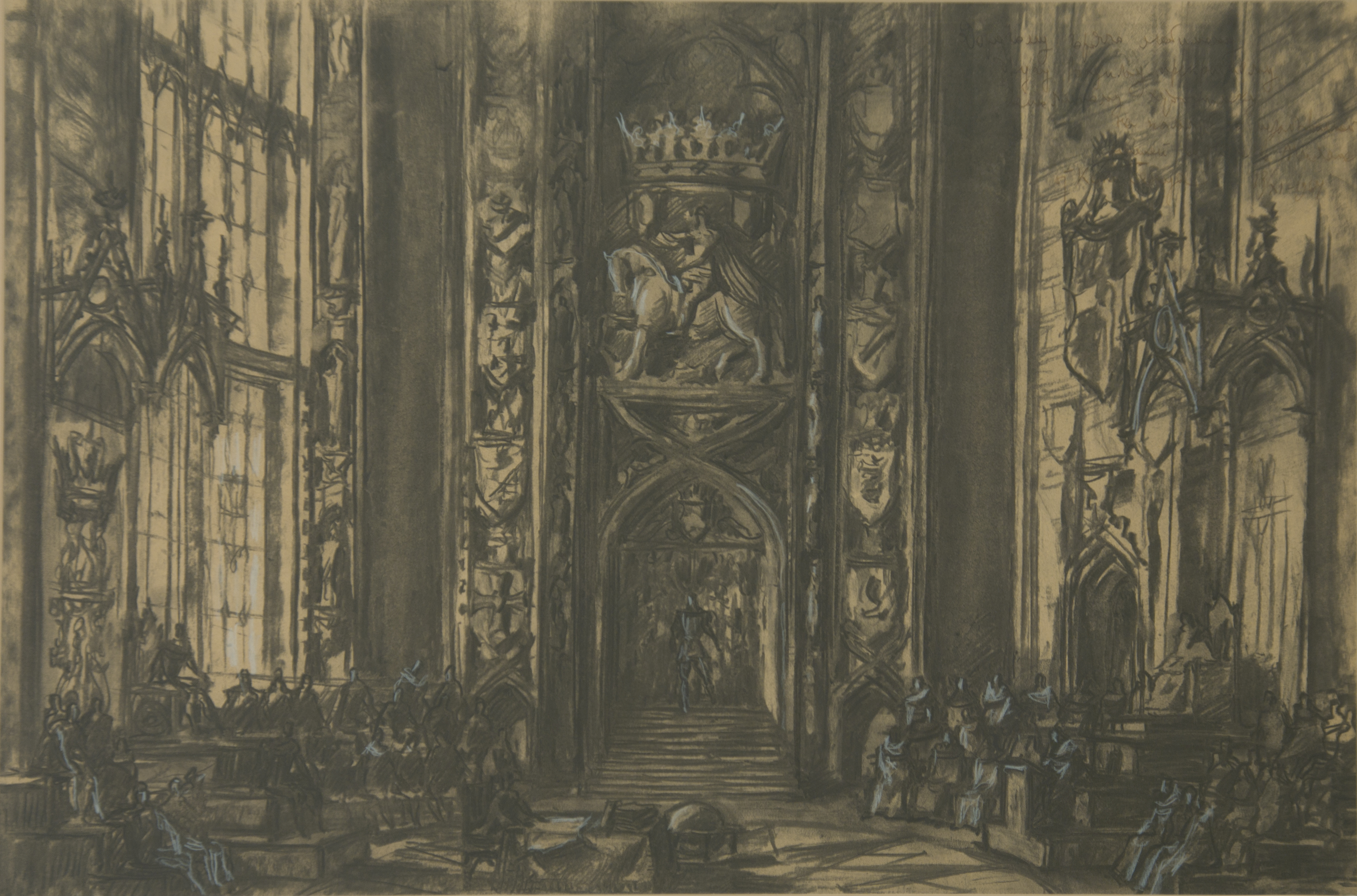In 1901, Nicola Benois was born in Oranienbaum; he was destined to become a renowned scenographer.
He was born in a family in which children were born “with a pencil in hand.”
He was the son of Alexander Benois – theater artist, painter, graphic artist, art historian and ideologue of the St. Petersburg “World of Art” artistic association, the grandson of architect Nikolai Benois, the nephew of watercolor artist Albert Benois and architect Leon Benois, and on the maternal line - great-grandson of Albert Kavos - the architect of the Mariinsky Theater.
“I come from a very interesting family, all of whose members have devoted their lives to a particular field of art, while taking quite prominent positions in painting, architecture, music, theater. From the earliest years, I could not help but feel an unstoppable tendencies to art and especially to theater.” From the young age, he performed the decorations according to the sketches of “World of Art” artists, and his debut as an independent stage designer took place in the Petrograd Academic Drama Theater, in the production of the play “Peer Gynt” by Henrik Ibsen.
1924 Nicola Benoit left for Paris.
“In Paris, I met the famous Russian director Alexander Sanin, who made me a stunning offer to design ‘Khovanshchina’ for the renowned La Scala Theater in Milan. In those times, the great conductor Arturo Toscanini reigned at La Scala. Having seen my trial sketches, he gave his ‘highest’ consent to my invitation.”
Thus began the long and fruitful way of the scenographer Nicola Benoit’s on the stage of La Scala, to which he gave half a century of his life, having designing about 126 productions. Many of his works have become tops in opera art.
“From the very beginning of my work in Italy I have been striving to establish in the performance important ‘reform’: to found an unbroken link (long practiced in the Russian theater) between decoration and costumes in the name of stylistic unity of the whole performance. The scenographer, I suppose, must always take into account the designs of the composer and the director, but at the same time he cannot become a supporting figure and lose his personality.”
In 1937, Nicola Benoit became the principal set designer and the head of the artistic and staging department of La Scala and remained in that post until 1970, developing in his remarkable work the traditions of the Russian Silver age scenography.
After his death in 1988, a memorial plaque was erected on the house where he lived in Milan at the address Piazza Maria Adelaide.
N. A. Benoit at the Museum of Russian Art (Prof. A. Abrahamyan’s collection):
Sketch for stage design for J. Verdi’s opera “Don Carlos”
From the Author's Works

Sketch for stage design for J. Verdi’s opera “Don Carlos”
Graphic

